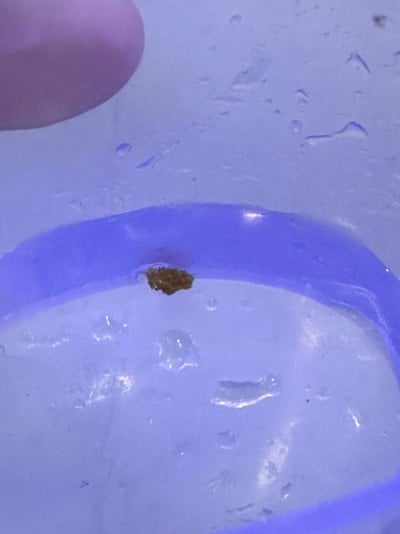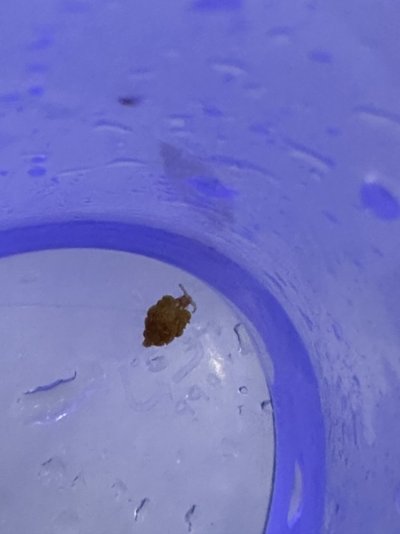Navigation
Install the app
How to install the app on iOS
Follow along with the video below to see how to install our site as a web app on your home screen.
Note: This feature may not be available in some browsers.
More options
You are using an out of date browser. It may not display this or other websites correctly.
You should upgrade or use an alternative browser.
You should upgrade or use an alternative browser.
ID help!
- Thread starter Vitor
- Start date
- Tagged users None
That's a nudibranch that eats cnidarians of some kind - any chance you've been having issues with a specific kind of coral lately? SPS and softies are the typical prey.
vetteguy53081
Well known Member and monster tank lover
View Badges
Partner Member 2024
Excellence Award
Reef Tank 365
RGB
Article Contributor
Tampa Bay Reef Keepers
West Palm Beach Reefer
Hospitality Award
Ocala Reef Club Member
305 Reef Club
Wisco Reefers
Midwest Reefer
Fish Medic
MAC of SW Florida
Rock Pool Reef Keepers
R2R Secret Santa 2023
My Tank Thread
My Aquarium Showcase
Non berghia and I would eliminate. Most will feed on coral tissue and algaes.
There is a special tank for them below:
Man I have wondered why so many Zoas heads are closed a lot of the time. Could that be it? Sinularia also shrinks but I think that is normal as it always comes back stronger and is growing.That's a nudibranch that eats cnidarians of some kind - any chance you've been having issues with a specific kind of coral lately? SPS and softies are the typical prey.
Tank is relatively recent. Is this one of those things that if you have one you likely have many?
Thanks!
Thanks. Bah this makes me sad. Am I likely to have more of them?Non berghia and I would eliminate. Most will feed on coral tissue and algaes.
There is a special tank for them below:

If its the zoa eating type yes they breed pretty prolifically.Man I have wondered why so many Zoas heads are closed a lot of the time. Could that be it? Sinularia also shrinks but I think that is normal as it always comes back stronger and is growing.
Tank is relatively recent. Is this one of those things that if you have one you likely have many?
Thanks!
Man I have wondered why so many Zoas heads are closed a lot of the time. Could that be it?
Yes, and yes - the typical recommendation is dip the corals to get the adults off, then search for egg spirals on the corals and scrape off any you find (be sure to use personal protective equipment like gloves, chem goggles, and a well-ventilated area when doing this with zoas/palys).Is this one of those things that if you have one you likely have many?
my best guess would be Aeolidiopsis/Baeolidia harrietae (there's some dispute around what genus the critter should fall into).
Either way, if my guess is correct, it's a known zoanthid eater, and it takes the zooxanthellae from its prey and stores it for use in its own body.
My guess would be Baeolidia palythoae or Baeolidia harrietae - they eat zoantharians like palys.
Well, I just found 3 more adults. So yup, we have a situation here. Unfortunately I don't have access to dips that are useful with pests I'm afraid. Only for bacteria and fungus it seems, like Seachem Reef Dip.
Would a freshwater dip help?
Would a freshwater dip help?
Went to dip and noticed these as well. Any ideia?Yes, and yes - the typical recommendation is dip the corals to get the adults off, then search for egg spirals on the corals and scrape off any you find (be sure to use personal protective equipment like gloves, chem goggles, and a well-ventilated area when doing this with zoas/palys).
Attachments
Typical amphipods. Good guys.Went to dip and noticed these as well. Any ideia?
Not all is lostTypical amphipods. Good guys.
I'm not sure what the best dip would be in this case - I've heard of using hydrogen peroxide dips before, but I don't know how safe/effective it would be.Would a freshwater dip help?
In theory, you could just use a turkey baster or similar and remove any adults you see, but you'd want to be careful looking for them, as they can blend in pretty well.
And, yeah, those looked like amphipods.
Similar threads
- Replies
- 1
- Views
- 154
- Replies
- 7
- Views
- 173



















